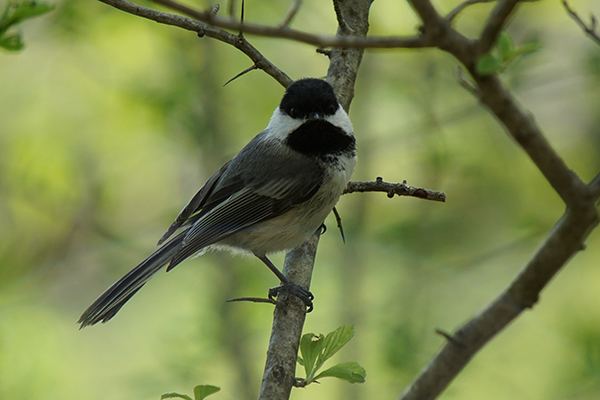I was looking through my pictures recently when I noticed a trend. A lot of my bird photos had the bird in the same kind of plant: a hawthorn.
I’m no professional photographer, but I do like taking nature photos. Aside from being fun, I find it helps me notice more when I go for walks.
I was looking through some of my old pictures recently when I noticed a trend. A lot of my bird photos had the bird in the same kind of plant: a hawthorn.
A common yellowthroat sings while perched on a hawthorn branch.
Hawthorns are tall shrubs or short trees. They’re a huge group of plants with hundreds of different species. They have an equally huge range, with native species found in North America, Europe, and Asia.
Hawthorns are common plants along wooded edges and in old fields. I photographed this female Baltimore oriole in a hawthorn growing in an abandoned farm field.
Seeing all these birds on hawthorns made me wonder. What is it about hawthorn that makes it so popular with wildlife?
Turns out, hawthorns are amazing wildlife plants. In spring, they grow lots of sweet, nectar-rich flowers that attract pollinators like bees. Deer and rabbits like to munch on their bark and twigs. Their berry-like fruits (called “pomes” or “haws”) linger on the plant into winter, providing important cold-weather food for black bears, ruffed grouse, cedar waxwings, and numerous other animals.
Hawthorn “haws” provide a valuable wildlife food, especially in winter.
Hawthorns attract more than birds. The foliage supports many caterpillar species, while bees love their nectar-rich flowers. That combo makes hawthorns a good planting choice for those who want to help pollinators.
As for why birds like them so much, that has to do with the “thorn” part of hawthorn. Hawthorns have long, hard, sharp spines that poke out now and then along their branches. A songbird can easily avoid those thorns, but bigger animals like hawks, coyotes, and people? Not so much. That means smaller animals can feel safe tucked deep inside the hawthorn, a factor that makes them popular nest choices.
The long, sharp spines on hawthorn branches are easily avoided by this tiny house wren, but they form a tough, painful barrier for predators.
If you’re a nature photographer or wildlife lover and looking to plant some trees or shrubs, a native hawthorn is a great choice. They work particularly well for backyard or woodland edge plantings and in old fields where they can get plenty of sun. To maximize their cover value for wildlife, plant multiple hawthorns together so they grow into a dense hedge.
There are other plants wildlife like as much as hawthorn, but an advantage of hawthorn for the nature photographer is that it’s short. A songbird way up in a black cherry might be a speck even in your telephoto lens, but with the short hawthorn, often the bird will be at or near eye level. This black-capped chickadee and I were staring at each other from less than ten feet apart.
One care when planting hawthorn: make sure you get a native variety. The plants you see at nurseries are often imports like European hawthorn. Even though they’re related to native species, their wildlife value is much lower (for reasons I don’t have space to go into here). Insist on a native species when seeking hawthorns to plant. Don’t worry; the plant’s wide distribution means there’s usually a native species adapted to wherever your property is.











